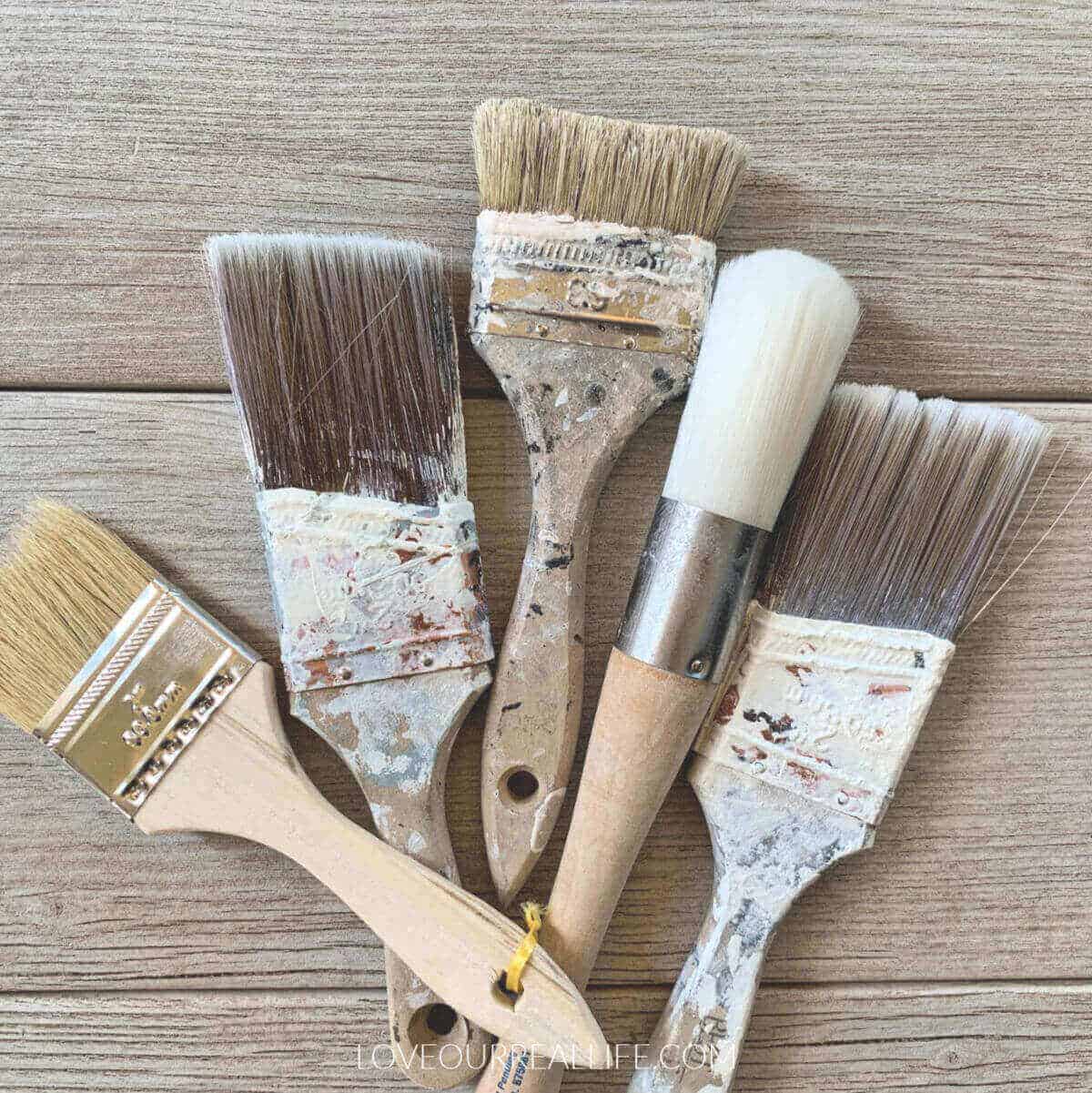What Brush To Use With Chalk Paint
Chalk paint has become a popular choice for DIY projects due to its unique matte finish that can give furniture and decor a vintage or rustic look. However, achieving the desired finish can be challenging without the right brush. Choosing the right brush is essential to achieve a smooth and even finish without damaging the paint. With so many brush types available, it can be overwhelming to determine which one to use.
In this comprehensive guide, we will explore the different types of brushes available for chalk paint, including natural bristle brushes, synthetic bristle brushes, foam brushes, and detail brushes. We will discuss the pros and cons of each brush type, their best applications, and tips for maintaining and cleaning them.
Whether you’re a seasoned DIYer or a beginner, this guide will help you choose the right brush for your chalk paint project, no matter the surface or effect you’re trying to achieve. With the right brush, you can take your DIY projects to the next level and create beautiful, one-of-a-kind pieces for your home.

Required Tools and Materials
Before you start your chalk paint project, make sure you have the following tools and materials:
- Chalk paint
- Paintbrush
- Sandpaper
- Wax or sealant (optional)
Types of Brushes for Chalk Paint
There are several types of brushes available for chalk paint, including natural bristle brushes, synthetic bristle brushes, foam brushes, and detail brushes. Each brush type has its own pros and cons, and the best brush for your project will depend on several factors, such as the surface you’re painting and the effect you’re trying to achieve.
Natural Bristle Brushes
Natural bristle brushes are made from animal hair and are a popular choice for chalk paint because they provide a smooth and even finish. They are ideal for large surfaces and can hold a lot of paint, which reduces the number of times you need to dip the brush into the paint.
However, natural bristle brushes are not suitable for water-based paint as the bristles can absorb too much water and become floppy. They are also more expensive than synthetic brushes and require more maintenance.
Synthetic Bristle Brushes
Synthetic bristle brushes are made from nylon or polyester and are a popular choice for water-based paint, including chalk paint. They are durable, easy to clean, and do not shed as much as natural bristle brushes.
However, synthetic brushes can leave brush marks on the surface, and they can’t hold as much paint as natural bristle brushes. They are also not suitable for waxing or buffing the paint.
Foam Brushes
Foam brushes are inexpensive and are a popular choice for small projects or hard-to-reach areas. They are suitable for water-based paint and provide a smooth and even finish. However, they don’t hold as much paint as bristle brushes and can leave air bubbles on the surface.
Detail Brushes
Detail brushes are small brushes designed for intricate work, such as painting small areas or adding details to a piece of furniture. They are ideal for painting corners, edges, and details on furniture or decor. However, they are not suitable for larger surfaces and can be time-consuming to use.
Choosing the Right Brush for the Project
Choosing the right brush for your chalk paint project depends on several factors, such as the surface you’re painting, the effect you’re trying to achieve, and the type of paint you’re using. Here are some tips to help you choose the right brush for your project:
- Use a natural bristle brush for large surfaces and oil-based paint.
- Use a synthetic bristle brush for water-based paint and smaller surfaces.
- Use a foam brush for small projects or hard-to-reach areas.
- Use a detail brush for intricate work or adding details to furniture or decor.
Tips for Cleaning and Maintaining Chalk Paint Brushes
Cleaning and maintaining your chalk paint brushes is essential to prolong their life and ensure they perform well for future projects. Here are some tips for cleaning and maintaining your brushes:
- Clean your brushes immediately after use: As soon as you finish painting, clean your brushes thoroughly with warm water and soap. Avoid leaving paint on the brush for extended periods, as this can cause the bristles to harden and make them difficult to clean.
- Use the right cleaning solution: Use a mild cleaning solution, such as soap and water, to clean your brushes. Avoid using harsh chemicals or solvents, as they can damage the bristles and the brush handle.
- Rinse your brushes thoroughly: Rinse your brushes thoroughly with warm water to remove all traces of soap and paint. Make sure you rinse the bristles from the base to the tip to ensure that all paint residue is removed.
- Store your brushes properly: After cleaning, reshape the bristles and store your brushes in a dry and cool place. Avoid storing them in direct sunlight or near a heat source, as this can cause the bristles to warp or soften.
- Recondition your brushes when necessary: If your brushes become stiff or misshapen, you can recondition them by soaking them in fabric softener or vinegar. This will help to soften the bristles and restore their shape.
Conclusion
Choosing the right brush for your chalk paint project is crucial to achieving the desired finish and ensuring the longevity of your brush. Natural bristle brushes are ideal for oil-based paint and large surfaces, while synthetic bristle brushes are suitable for water-based paint and smaller surfaces. Foam brushes are ideal for small projects or hard-to-reach areas, while detail brushes are perfect for intricate work.
Remember to clean your brushes immediately after use and store them properly to prolong their life and ensure they perform well for future projects. By following the tips outlined in this guide, you can choose the right brush for your chalk paint project and ensure your brushes last for many years to come.
